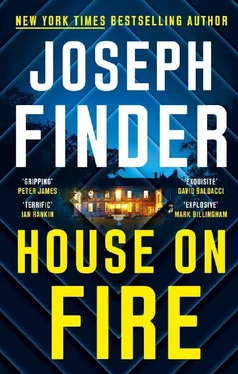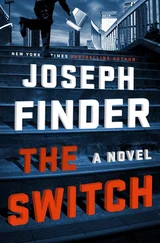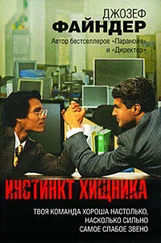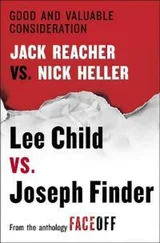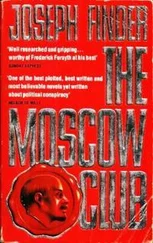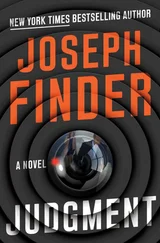“Where’d they do the study?”
“Eastern Europe. Estonia.”
“They deep-sixed it?”
“Right. You can do that in Estonia.”
“But who? Who can bury it?”
“The CRO. You know what that is?”
“Yeah. Contract research organization.” Outsiders, my father had said. Vendors. It’s harder to erase their memories.
“Exactly. All it takes is someone complicit in the company. Money talks.”
“Is that the sort of thing Conrad Kimball might do?”
She laughed but didn’t answer.
“What’s your take on the old man?”
“Smart guy and a great marketer.”
“Dishonest?”
She hesitated. “I’d say the word is ruthless. Relentless. Apparently he still runs the company at eighty. I think I know what you’re talking about.”
“Oh, yeah?”
“Oxydone. Was there a study done on Oxydone that Kimball had buried? There’ve long been rumors.”
“I’ve heard the rumors too.”
“Is this a case you’re working on?”
“An interest of mine,” I said. “Sort of a side hustle.” I’d already said way too much. “I gotta run.”
I sent Gabe a text but didn’t hear back; he was probably asleep. The record store opened at eleven; he might not start work till noon.
Dorothy, meanwhile, was building my alias, the fake background of the fake McKinsey consultant named Nicholas Brown.
I’d started at the Kimball house under a notional cover, which wasn’t expected to withstand heavy scrutiny. But now Dorothy was working on creating a deeper, more durable cover.
A cover, in the intelligence business, is the collection of lies and false companies and such you’ve created to make a fictional entity — in my case, “Nick Brown” — checkable. We call it backstopping. I got in touch with the new head of the Boston office of McKinsey, who turned out to be a friend of a friend, and I asked him to backstop me if and when a call came. We set up a phone line. Turned out there were already several Nick Browns working for the firm. Now you called and someone answered and said I was traveling.
In the old days, the CIA hired forgers to create ID cards and driver’s licenses and birth certificates and school records. And fake passports, fake plane tickets, all that stuff.
But it’s not so easy these days. Not in the age of Facebook and Google and LinkedIn. Now you’ve got to be able to survive a Google search. Anyone checking up on you, if they can’t find your digital vapor trail, they know you’re a fraud. You have to create a credit history. Dorothy set up my LinkedIn account so it looked like it had been up for seven years. It couldn’t look like it just went up yesterday. She even put up a convincing Facebook page that looked like it had been around for five years or so. There were tricks to the trade, and Dorothy knew a lot of them.
Usually those tricks are enough, but not always.
“Who was it you want me to write a letter to?” I asked Dorothy. “Some guy on a co-op board, right?” She was wearing an earth-toned silk blouse and a brown skirt and looked unusually professional once again.
She gave me the name and an email address. I jotted it down on my little black pocket notebook. She wanted a letter — an email would do — affirming that she would be employed by Heller Associates for the foreseeable future.
I didn’t plan to write such a letter, though, but she didn’t need to know that. I had other plans.
A couple of emails had come in from the City of Boston with attachments.
They concerned John Warren, the chairman of the co-op board at the Kenway Tower in Boston. The man who was giving Dorothy a hard time and who had “concerns” about her income and credit history. I knew if I bore down I’d find some dirt. You almost always do.
Was the guy a racist? Was he trying to keep her out because she was black? Possibly. Maybe even probably, but sometimes it’s hard to prove bias.
Well, I wasn’t trying to make a case. I just wanted to help Dorothy.
And I’d figured out a way. I’d gotten a copy of the assessed value of the guy’s apartment, and like I suspected it would be, the figure was ridiculously low, way below the value of a high-floor apartment in a tower in the city of Boston. I punched out the phone number for Mr. Warren, and while it rang, I quickly rehearsed what I was going to do. I’m no real estate guy, I’d say, but I can see the assessed value of your co-op is less than half what it should be. If a concerned citizen, say, were to make a phone call to the city tax authorities, your property taxes will double. And I’d hate for that to happen.
Yeah, I could do that. I could probably make the guy fold instantly. He’d let Dorothy buy in, once his finances were challenged. No matter what color her skin was, his self-interest would prevail.
I could do that. But then I was thinking of Maggie and something that happened with her years ago.
I hung up.
Instead, I put the printouts in a file folder and walked them over to Dorothy’s cubicle. I dropped the thick folder on her desk.
“Do with it what you want,” I said.
“What’s this?”
“Check out John Warren’s property taxes. How low they are.”
“That asshole John Warren from the co-op board?”
“The very one. I almost set up a meeting with him. But it’s your fight. Not mine.”
“Thank you,” she said.
I decided it was a good time to pay a visit to Phoenicia Health Sciences, just as the morning rush hour was beginning. Do a little surveillance while people were arriving at work. I threw on a suit jacket and headed out the door.
I retrieved the Defender from the garage where I parked it to protect it from the Boston snow and salt. I took the Mass. Turnpike out to I-95 into Waltham. The tree-lined road — the leaves were russet and gold — gave way to a sleek, futuristic seven-story chrome-and-glass building surrounded by cedar trees, with a couple of connected parking lots on the back side, nicely set in the landscape.
This gleaming structure was the world headquarters of Phoenicia Health Sciences. I guess there was a lot of money to be made from testing drugs. I drove around the lots. There was reserved parking for certain executives. Part of a lot was reserved for clinical study patients. The rest were unmarked.
I didn’t want to enter the building yet. I was beginning to formulate a plan, which meant I’d have to come back, and I didn’t want to be recognized on a return visit. On the way home I placed a couple of calls. One was to my old friend George Devlin, who’d been on my Special Forces A-team, a communications sergeant. Devlin now made his living as a TSCM guy, which stands for technical surveillance countermeasures. Helping companies protect against being spied on. He called himself a hacker, a label he was proud of.
I told him what I wanted to do and arranged for him to come by my office later in the week. That didn’t mean he’d actually come into my office. He lived in an immense RV, a combo home and office, and rarely emerged from it. He was terribly mutilated, from an IED. I would meet with him inside his vehicle.
When I got back to my office, Dorothy rose from her desk and said, “I’ve been doing some more digging into Kimball Pharma, and I found something interesting. I found a scientist who was fired from Kimball a couple of years ago after complaining about Oxydone. About the company’s role in pushing millions of prescriptions. Kind of a whistle-blower. But after he got fired, he stopped talking. Maybe he’ll talk to you. You might want to give him a call.”
“You think? Hell, yeah. Great. Now, I’m going to need blueprints of the Phoenicia headquarters building in Waltham. You know, the architect’s plans.”
Читать дальше
